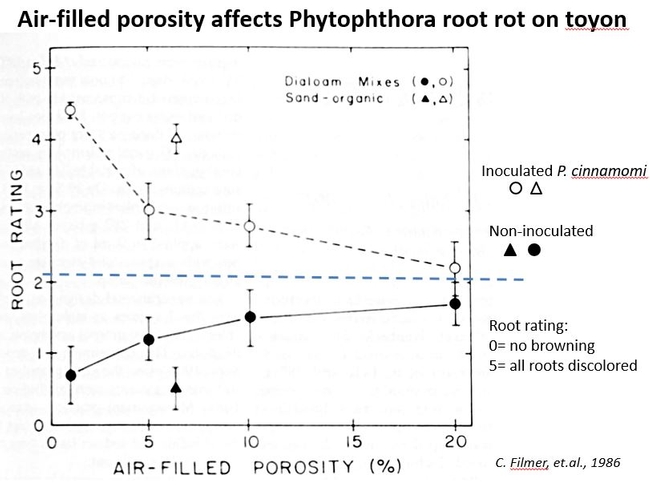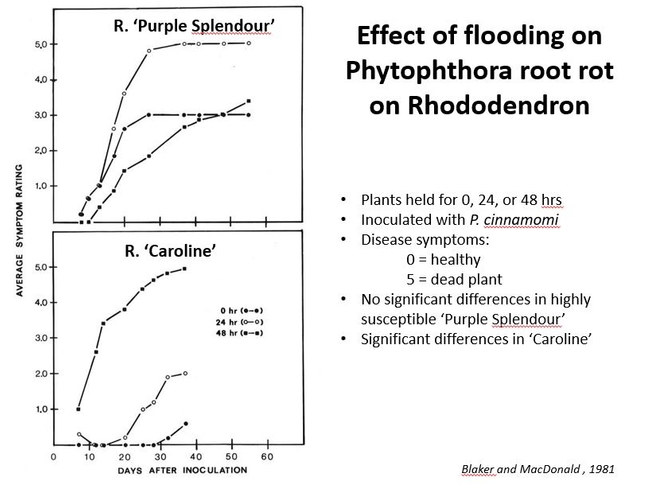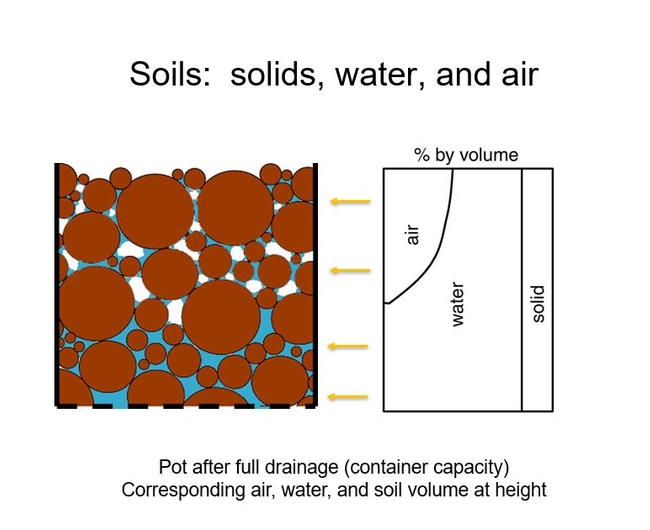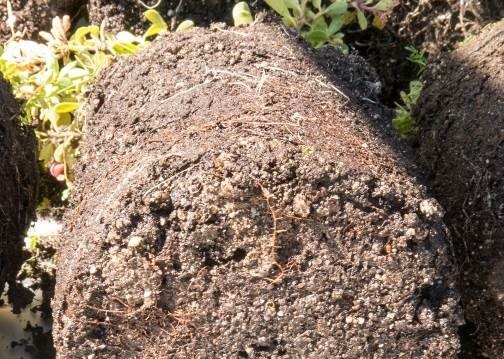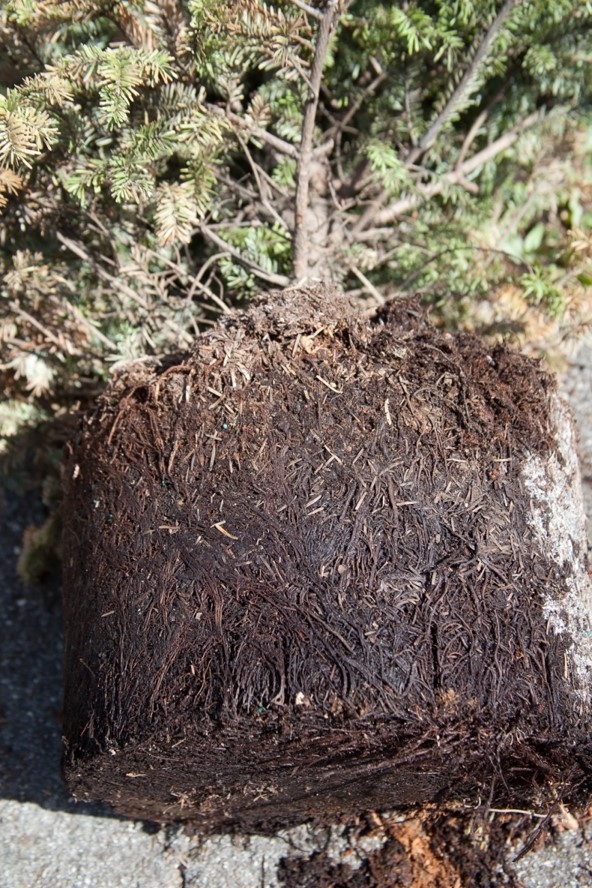Parameters for air- porosity and water- holding capacity have been established for container soils. These parameters were developed based on the needs of the plant. But the occurrence of root diseases can be affected by the amount of air and water in the soil too. Many horticulturists say that root diseases are commonly associated with “heavy soils” and “too frequent irrigations”. Some say “dry out the soil between irrigations”. Why is that?
There is research that supports these statements. A study evaluating disease severity of Phytophthora root rot on toyon in two container mixes illustrates the importance of having a relatively high air porosity in a container mix (Filmer, et.al, 1986). With increasing air- porosity, root disease decreased when plants were inoculated with Phytophthora, and root health increased in non-inoculated plants. Fig 1.
Another study demonstrates the impact of flooding containers on the severity of Phytophthora root rot on Rhododendron (Blaker and MacDonald, 1981). There were two rhododendron cultivars, ‘Purple Splendor' (a very susceptible cultivar) and ‘Caroline' (less susceptible), each inoculated with Phytophthora cinnamomi and “flooded” in their containers so that the soil was saturated for 0, 24, and 48 hours. The data showed that in ‘Purple Splendor', the disease progressed quickly in all flooding regimes (the top graph), but in ‘Caroline' there were differences in flooding regimes (the lower graph). In the less susceptible cultivar 'Caroline", disease severity increased with longer flooding periods. Fig 2.
Although “flooding” in this experiment may seem a bit extreme, yes, who would ever irrigate like that, I would remind you of the illustration that I showed in Soil Mix, Part 2. After full drainage (container capacity) there is a saturated soil layer, a “flooded” layer, at the bottom of the container. Fig 3.
It is easily conceivable that the bottom of the container could be flooded for 24, 48, or even more hours. In periods that have low transpiration rates, the plant's roots do not remove this saturated zone quickly. This might occur after a poorly-timed irrigation just before a rainy period. It might occur in a poorly ventilated greenhouse that has chronically high humidity.
Evidence of root disease being initiated in this saturated zone is seen commonly. In the following example with Manzanita uva-ursi, the brown roots and lack of fine roots at the bottom of the container is caused by Phytophthora root rot. Note that the roots above these are still healthy and white. They have not been consumed by Phytophthora, at least yet. Fig 4.
Another example of Phytophthora root rot on fir. In this case, the only healthy white roots remaining are at the upper profile of the soil. Fig 5.
Next: Effect of Soil Settling, Salinity, and Drought on Root Rot
